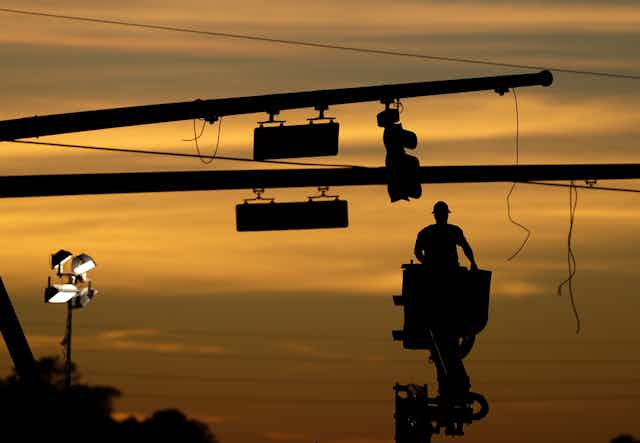The following is a roundup of previously published articles.
Storm-battered communities in Texas and Florida are moving into the long process of rebuilding after Hurricane Harvey and Hurricane Irma. With scientists forecasting that climate change will make storms more severe, many scholars argue that the goal should not be simply to rebuild what existed before the latest disaster. Instead, communities should focus on making themselves more resilient and mitigating future risks.
Those risks are stark, Texas climate scientists Andrew Dessler and Katharine Hayhoe and environmental engineer Daniel Cohan warn:
“In a warmer world, heavy precipitation is on the rise, which increases the amount of rain associated with a given storm. Sea level is rising, worsening the risks of coastal flooding and storm surge. At the cutting edge of climate research, scientists are also exploring how human-induced change may affect storm intensity and the winds that steer the hurricanes.”

Our aging, vulnerable infrastructure
Many U.S. roads, bridges and other infrastructure systems are decades old and lack resilience – the ability to respond to and recover from disruptive events. In Houston, heavy rainfall from Harvey overwhelmed inadequate stormwater drains and pipes. In Florida, despite investments in the power grid over the past decade, Irma left six million people without power in sweltering heat.
Modernizing infrastructure is expensive, but failing to do so is worse, writes Hiba Baroud, assistant professor of civil and environmental engineering at Vanderbilt:
“The U.S. infrastructure was built according to high standards 50 years ago, but they are no longer enough to ensure protection from today’s extreme weather. Such weather events are becoming more frequent and more extreme. That has a severe impact on our infrastructure, as cascading failures through interdependent systems such as transportation, energy and water will ultimately adversely impact our economy and society.”
What does resilient infrastructure look like? According to Arizona State University’s Thaddeus Miller and Mikhail Chester, such systems should be designed to handle the impacts of climate change. They should be flexible and easy to adjust, and should serve everyone in the community – especially low-income and minority populations, who are most vulnerable during disasters.
In sum, they observe, the infrastructure we need now cannot be designed with “the technologies, needs and climate conditions of the 20th century” as guides.
Strategies for cities and communities
Along with improving hard systems, communities can make themselves more resilient through smart planning. NASA scientist Cynthia Rosenzweig and Hunter College geography professor William Solecki note that every city has different vulnerabilities, from flooding to drought to extreme heat events. In their view, scientists, officials and citizens groups should work together to decide how to address each community’s most serious gaps.
“Scientists and stakeholders need to work together to understand the risks that are relevant for each city so that they can find effective ways to prepare for climate change,” they advise. “In order to develop specific, localized climate action plans, stakeholders and scientists need to work together to learn about climate risks, brainstorm strategies and prioritize implementation.”
Four counties and 26 cities in southeast Florida launched an innovative regional planning venture in 2009, the Southeast Florida Regional Climate Change Compact. This organization has developed a climate change action plan for its members, and works to promote smart responses to impacts such as sea level rise and flooding.
Planning scholars Karen Vella and William Butler say the compact is innovative and has effectively promoted the need to adapt to climate change:
“The compact works through existing planning and policy processes by seeking to amend comprehensive land-use plans, stormwater master plans, zoning ordinances, building codes and transportation standards. Implementation is dependent on county and municipal decision processes, budgets, local approaches to public involvement, enforcement, monitoring and review, and politics.”
However, they note, initiatives like this will have limited impact as long as members are not bound to take action. Adapting to climate change will require hard decision about directing development away from flood-prone areas and paying for infrastructure upgrades. Nonetheless, adapting Florida’s planning model would be a good way for other regions to start grappling with climate change.

